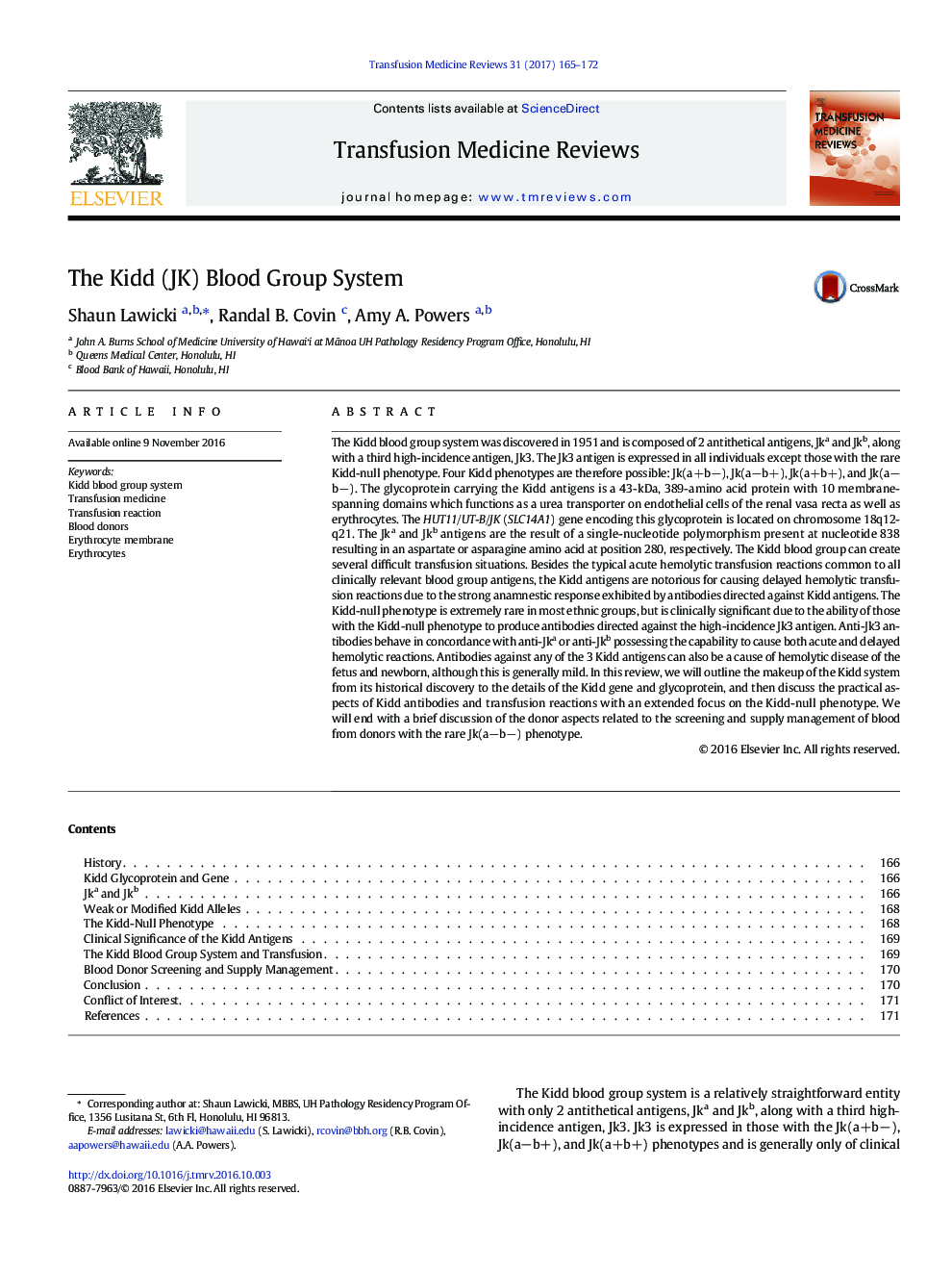| Article ID | Journal | Published Year | Pages | File Type |
|---|---|---|---|---|
| 5664802 | Transfusion Medicine Reviews | 2017 | 8 Pages |
â¢The Kidd glycoprotein is a multipass protein that functions as a urea transporter.â¢Four Kidd phenotypes are possible: Jk(a+bâ), Jk(aâb+), Jk(a+b+), and Jk(aâbâ).â¢The Jk3 antigen is high incidence and clinically relevant in Kidd-null individuals.â¢Polynesians most commonly have an increased prevalence of the Kidd-null phenotype.â¢Kidd blood group system antibodies cause acute and delayed hemolytic reactions.
The Kidd blood group system was discovered in 1951 and is composed of 2 antithetical antigens, Jka and Jkb, along with a third high-incidence antigen, Jk3. The Jk3 antigen is expressed in all individuals except those with the rare Kidd-null phenotype. Four Kidd phenotypes are therefore possible: Jk(a+bâ), Jk(aâb+), Jk(a+b+), and Jk(aâbâ). The glycoprotein carrying the Kidd antigens is a 43-kDa, 389-amino acid protein with 10 membrane-spanning domains which functions as a urea transporter on endothelial cells of the renal vasa recta as well as erythrocytes. The HUT11/UT-B/JK (SLC14A1) gene encoding this glycoprotein is located on chromosome 18q12-q21. The Jka and Jkb antigens are the result of a single-nucleotide polymorphism present at nucleotide 838 resulting in an aspartate or asparagine amino acid at position 280, respectively. The Kidd blood group can create several difficult transfusion situations. Besides the typical acute hemolytic transfusion reactions common to all clinically relevant blood group antigens, the Kidd antigens are notorious for causing delayed hemolytic transfusion reactions due to the strong anamnestic response exhibited by antibodies directed against Kidd antigens. The Kidd-null phenotype is extremely rare in most ethnic groups, but is clinically significant due to the ability of those with the Kidd-null phenotype to produce antibodies directed against the high-incidence Jk3 antigen. Anti-Jk3 antibodies behave in concordance with anti-Jka or anti-Jkb possessing the capability to cause both acute and delayed hemolytic reactions. Antibodies against any of the 3 Kidd antigens can also be a cause of hemolytic disease of the fetus and newborn, although this is generally mild. In this review, we will outline the makeup of the Kidd system from its historical discovery to the details of the Kidd gene and glycoprotein, and then discuss the practical aspects of Kidd antibodies and transfusion reactions with an extended focus on the Kidd-null phenotype. We will end with a brief discussion of the donor aspects related to the screening and supply management of blood from donors with the rare Jk(aâbâ) phenotype.
